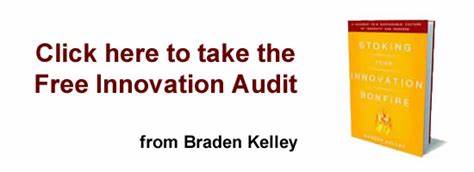
GUEST POST from Art Inteligencia
Cross-sector partnering and collaboration amongst organizations have been seen as an effective means to achieve greater innovation that can help propel businesses further. A strategic innovation plan is a comprehensive document that lays out goals and processes for project execution and explains how the company can leverage its resources to make its innovations successful.
In this article, we will explore how to craft a comprehensive innovation plan that leverages organizational strengths and allows businesses to reach their business objectives.
1. Identify Desired Outcomes
The first step in crafting an innovation plan is to determine what the desired business objectives are. Be as specific and detailed as possible, outlining Phase 1, 2, and beyond requirements. This will determine how the company will measure and reward its key players and how it will navigate the stakeholder process.
2. Assess Strengths and Weaknesses
Have a clear understanding of the company’s strengths and weaknesses to guide your innovation plan. This includes internal resources, such as personnel and technology, and external resources, like partner organizations, funding sources, and opportunities. This will also help you identify any potential pitfalls that might derail your plan or areas that need to be addressed in order to maximize success.
3. Evaluate and Analyze Business Risks
With the desired outcomes and resources in mind, it is important to identify potential risks associated with the innovation plan. This includes operational, technological, financial, competitive, political and legal risks. The analysis of these risks will help the company understand what to prioritize during the innovation process.
4. Define Team Composition and Roles
Assess the skills and capabilities of the team members to ensure they are well-suited to bring the innovation plan to life. It is also important to define roles and responsibilities. A structured team with clear responsibilities will result in a better engagement and communication across the organization.
5. Establish an Action Plan
It’s time to set out the action plan to bring the innovation to life. Define milestones, assign tasks, and set out deadlines as needed. Have regular meetings with the team in order to track progress and provide feedback.
Case Study 1 – Johnson & Johnson
One company that successfully implemented a strategic innovation plan was Johnson & Johnson. The company created an innovation team from its R&D, marketing, and supply chain departments to develop new products and services that leveraged the its vast existing resources. The team identified risks associated with the project, used customer feedback to hone the innovation, and created a detailed action plan to bring the project to fruition, resulting in a successful adoption of the new products and services.
Case Study 2 – Frito Lay
Another company that has successfully implemented an innovation plan is Frito-Lay. The company identified its core assets and mapped out a detailed step-by-step plan that defined the objectives, timelines, and team roles for their innovation projects. This blueprint provided a hands-on approach to ensure each innovation initiative was successful and brought value to the company’s customers.
Conclusion
Crafting a strategic innovation plan is an essential step for any business that wants to unlock its potential and unleash creativity. By taking the time to map out the desired outcomes, assess strengths and weaknesses, evaluate business risks, craft team roles and assign tasks, and create an action plan, businesses can ensure their innovation projects are successful. Leveraging the case studies provided in this article, businesses should be well-equipped with the tools to craft an effective innovation plan.
Image credit: Pexels
![]() Sign up here to get Human-Centered Change & Innovation Weekly delivered to your inbox every week.
Sign up here to get Human-Centered Change & Innovation Weekly delivered to your inbox every week.
 One scary statistic is that 70% of change initiatives fail. An overwhelming proportion of new product launches fail. Most new businesses fail.
One scary statistic is that 70% of change initiatives fail. An overwhelming proportion of new product launches fail. Most new businesses fail.
